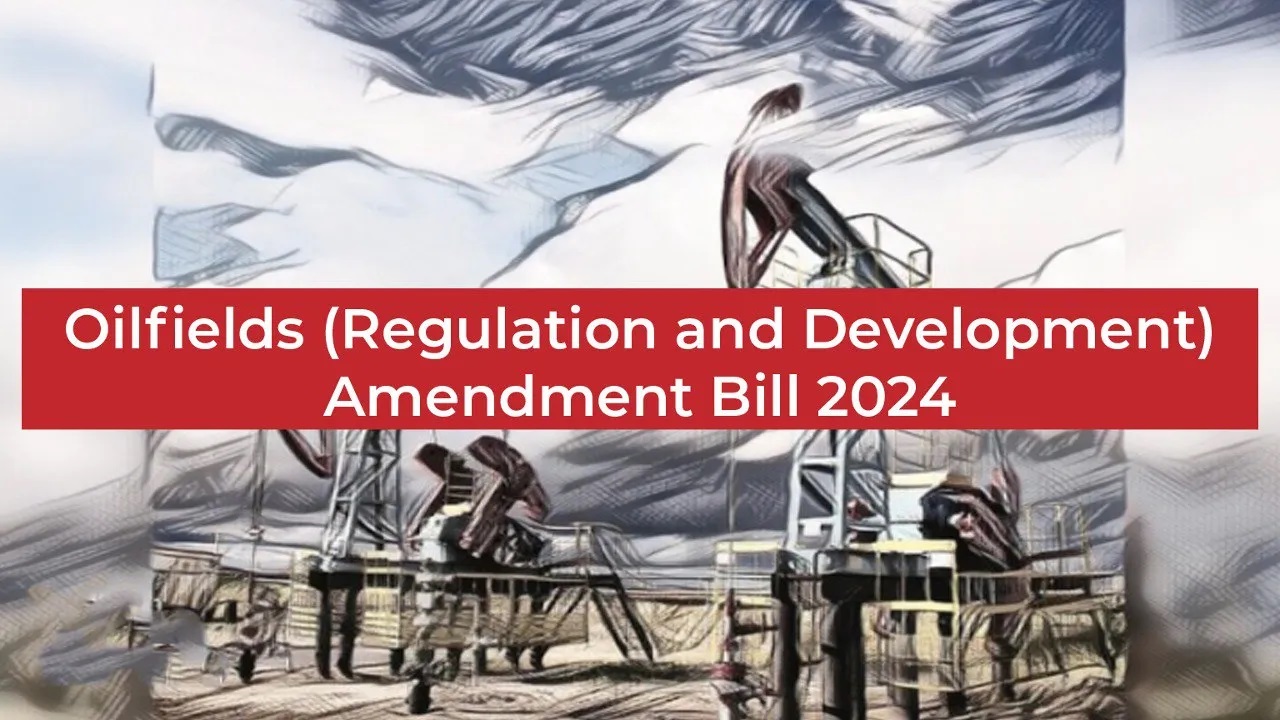OILFIELDS (REGULATION AND DEVELOPMENT) AMENDMENT BILL, 2024
Context: The Rajya Sabha recently passed the Oilfields (Regulation and Development) Amendment Bill, 2024.
Background:
The Bill amends the Oilfields (Regulation and Development) Act of 1948, differentiating it from the Mines and Minerals (Development and Regulation) Act, 1957, which governs mineral mining. The original Oilfields Act, passed in 1948, was later renamed to focus on "mineral oils" instead of "minerals," but it lacked a clear definition of mineral oil, which this Bill addresses.
Key Provisions:
-
Expanded Definition of Mineral Oils:
Includes unconventional hydrocarbons like coal bed methane, shale gas, and gas hydrates, but excludes coal, lignite, and helium from the petroleum process. -
Petroleum Lease:
Defines a lease for activities such as exploration, production, and disposal of mineral oils. -
Expanded Regulatory Powers of the Centre:
Grants powers for emission reduction, green technologies (like hydrogen and carbon capture), and lease mergers. -
Decriminalization of Offenses:
Shifts from criminal penalties to administrative fines for lease infractions, raising fines for better compliance. -
Opening No-Go Areas for Exploration:
Allows exploration in previously restricted zones, like near missile testing sites.
Significance and Impact:
-
Boost to Domestic Output:
Enhances production of conventional and unconventional resources, reducing reliance on oil imports, which exceed exports by threefold. -
Policy Stability:
Provides a predictable regulatory environment, reducing redundant approvals and enabling smoother operations. -
Green Energy Integration:
Supports green initiatives like hydrogen production and carbon capture, paving the way for decarbonization. -
Economic Implications:
Streamlines processes to encourage private sector participation, supporting energy security and reduced import dependency.



.jpg)
Comments (0)